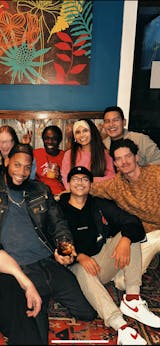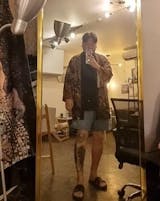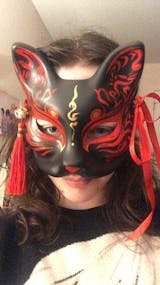I am not the type of person to write reviews but here it goes.
I really needed the clothes for an unexpected party but I chose the fast delivery option and I should say I’m impressed by their fast delivery. The product matches the pictures displayed and I’m impressed by the quality. Kudos to Eiyo Kimono.
Filters
The History and Culture of Tengu Masks

What are tengu?
Japanese folklore and mythology consist of many legendary and magical creatures. We often refer to them as “yokai” if they are supernatural and “kami” if they are a sort of Shinto god. However, one creature can be regarded as both “yokai” and “kami” and they are called “tengu.” Tengu are quite popular when it comes to Japanese folklore and have very distinguishable characteristics to help identify them, even for those in the Western world. The origin of the tengu, like many other aspects of Japanese and Asian cultures, derives from Chinese literature. The term “tengu” is often thought to have come from the ancient Chinese creature “tiāngǒu.” The tengu are traditionally depicted as a mixture of human, bird, and monkey qualities. SarutahikoŌkami, a deity in the Japanese religion of Shinto, is considered to be the first model of tengu and created the standard from which the tengu images are derived from.
What do the tengu masks mean?
The tengu are often presented in many different forms but have many specific features that set them apart from other folklore. The tengu are often red with angry expressions on their face. But the most popular and distinguishable feature is the long red nose that the tengu has. Tengu are fearsome demi-gods that would protect mountainous areas. These creatures have been represented in Japan as masks.
What are tengu masks used for?
Tengu masks are used for Noh stage plays and certain Shinto festivals. Japanese Buddhism and Shintoism have co-existed for so long that many of the spirits and minor deities in the two religions have started to mingle. The primary Shintō rites and festivals are for celebrating the new year, baby birth, coming of age, planting and harvest, weddings, and groundbreaking ceremonies for brand new buildings. Death, funerals, and graveyards involve Buddhist rituals, not Shintō. Noh, the oldest surviving Japanese dramatic form, combines elements of dance, drama, music, and poetry into a highly stylized, aesthetic retelling of a well-known story. Tengu masks are also often used as a decoration since the tengu are thought to frighten bad spirits and bring good luck.
How to Make a Tengu Mask
Most tengu masks are made from a mixture of cloth, paper, paints, and other sculpting materials. These masks take very detailed work, but are easily found throughout Japan. Masks are generally found at Noh plays and festivals. Some people will buy the masks to wear as part of a costume, while others will buy it as decoration.
Can Tengu Be Female?
Traditionally, tengu would have short names that would reflect their personalities. This did not reflect their gender. In Noh plays and tradition, men generally would play tengu creatures. This has been a growing issue in Japan, since men have dominated theater productions for nearly 650 years. Today, there are more women than ever trying to break the male barrier of theater. Noh theater has been plagued by means of a decline in students and a loss of patronage, and as young men in Noh families have begun to choose relaxed office jobs over family lifestyle, women have stepped in to fill their roles. The move mirrors Japanese women's entry into other traditionally male fields, including politics and train conducting. In the course of the Edo period (1600–1868), when Noh flourished with the guidance of the Tokugawa shogunate, ladies were banned from publicly acting as Noh as part of a government crackdown on man or woman freedom and morality. However, during the Meiji healing inside the past due 1800s, while Noh actors had been stripped of their patronage, ladies again to the degree. sooner or later, in 1948—newly defeated in global struggle II and reeling from Western pressures—Japan allowed its first officially diagnosed expert girl Noh actor, Kimiko Tsumura.
Oni vs. Tengu Masks
These masks are often depictions of Japanese mythological demons and continue to be used in Japanese art, pop culture and even by many tattoo artists because of their distinctly fearsome and yet appealing features. One major difference between the two is that the tengu have the long red nose protruding in the front, while the oni masks tend to be either red or blue in color and have horns coming out of the top of the mask. Oni masks are generally used during the aforementioned Setsubun holiday, while the tengu masks make more appearances in the Noh plays. Both of these masks have found themselves in other forms of art and culture as well, including movies, manga, art, and sculptures. Both oni and tengu creatures give life and flavor to Japanese culture and have for centuries.
What are oni masks?
Similar to the tengu masks are the oni masks, which are also spirits in Japanese folklore. The difference between the two is that oni are generally evil spirits with superhuman strength. Oni tend to be portrayed as roguish villains. In modern times, they are only depicted as evil to outsiders, rather than the people living within their domain. Men would dress up as oni during parades and dance to scare away other evil spirits. Children often would throw beans at the costumed oni during the Setsubun holiday. When the beans are thrown, the children (and adults) shout, "Oni wasoto! Fukuwauchi!" which means “Oni out!”









